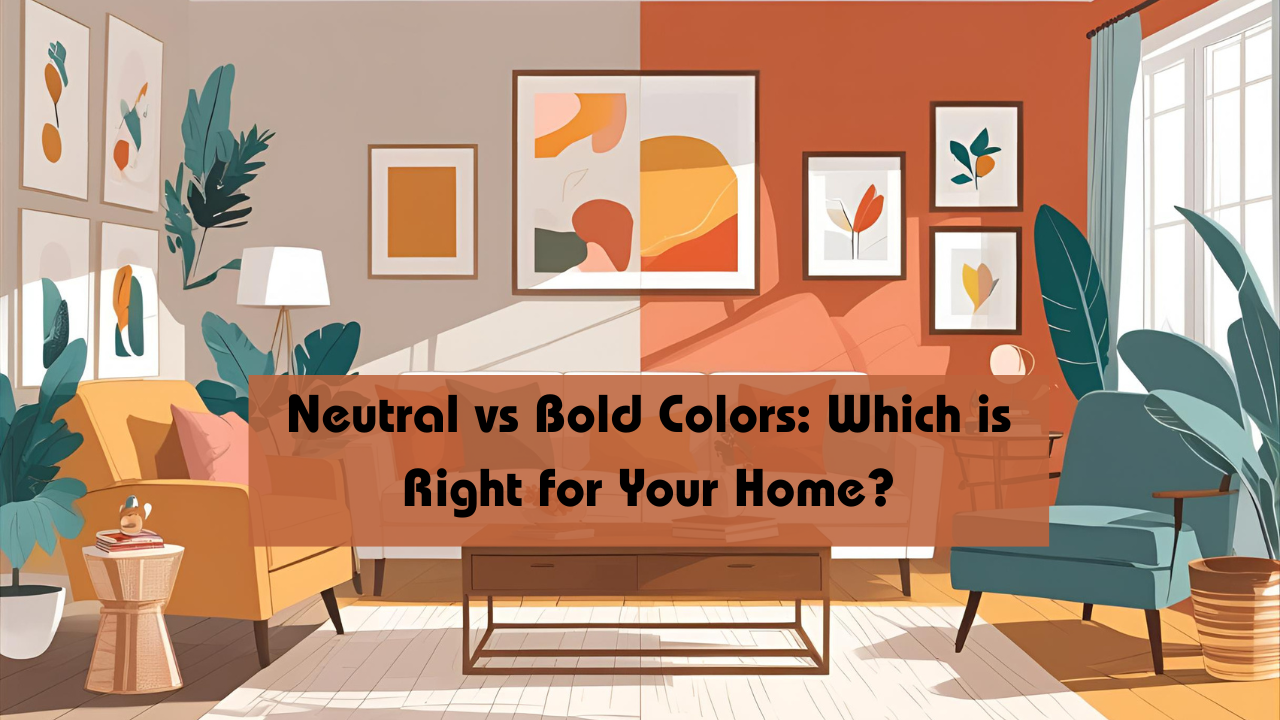Choosing between neutral and bold colors can completely change how your home feels and functions. While neutral tones offer versatility and timeless elegance, bold colors bring personality, vibrancy, and drama. So which direction should you go? The answer depends on your space, lighting, personal style, and purpose of each room. This guide breaks down the key differences, benefits, and best use-cases for neutral and bold wall colors—so you can make the right choice for every corner of your home.
Overview: Neutral vs Bold Color Comparison
| Feature | Neutral Colors | Bold Colors |
|---|---|---|
| Common Shades | Beige, White, Grey, Taupe | Red, Navy, Emerald, Teal, Mustard |
| Mood Created | Calm, Clean, Versatile | Energetic, Expressive, Confident |
| Best For Room Type | Living Rooms, Bedrooms, Offices | Dining Areas, Accent Walls, Kids’ Rooms |
| Light Compatibility | Reflects light, enhances space | Absorbs light, adds drama |
| Maintenance | Easier to repaint and layer decor | Requires precise pairing and balance |
| Design Flexibility | Matches with any theme or furniture | Demands harmony with furnishings |
Why Choose Neutral Colors?
1. Timeless & Versatile
Neutral colors like white, beige, soft grey, and taupe never go out of style. They work across design themes—minimalist, Scandinavian, rustic, or modern—and offer a perfect backdrop for evolving decor and furniture.
2. Enhances Space & Light
Lighter neutrals reflect natural light and can make small or dimly lit rooms feel larger and brighter.
3. Great for Layering Textures
Neutrals allow you to play with materials like wood, linen, metal, or stone without overwhelming the room visually.
Best Used In:
- Living Rooms
- Bedrooms
- Home Offices
- Hallways
Ideal For:
- Calm atmospheres
- Staging homes for resale
- Long-term color commitment
Why Choose Bold Colors?
1. Personality-Packed Spaces
Bold colors like deep navy, emerald green, rich burgundy, or mustard yellow instantly make a statement. These hues evoke strong emotional reactions—ideal for adding personality to otherwise simple rooms.
2. Perfect for Accent Walls
If you don’t want to commit fully, use bold tones on a single wall to create a focal point without overwhelming the space.
3. Creative Expression
Bold colors can enhance mood, creativity, and energy—especially in social or dynamic areas like dining rooms, kitchens, or playrooms.
Best Used In:
- Dining Rooms
- Kids’ Bedrooms
- Accent Walls
- Creative Studios
Ideal For:
- Vibrant personalities
- Artistic or eclectic homes
- Room zoning and visual drama
When to Mix Both
Neutral and bold colors can complement each other beautifully. Use neutrals as the base and introduce bold accents through one wall, furniture, or décor. This hybrid approach offers balance and flexibility.
Example Combos:
- White walls with deep blue velvet furniture
- Soft grey rooms with a mustard yellow accent wall
- Beige backgrounds with emerald green cabinetry
Key Decision Factors
| Question | Go Neutral If… | Go Bold If… |
|---|---|---|
| Do you change decor often? | Yes – Neutrals are easier to adapt | No – Bold colors demand consistency |
| Is your space small or dark? | Yes – Neutrals reflect light and open space | No – Bold colors can shrink a room |
| Do you want to make a statement? | No – Subtle tones keep it classic | Yes – Bold hues add energy and personality |
| Are you selling or renting soon? | Yes – Neutrals appeal to more buyers/renters | No – Bold may deter conservative tastes |
Conclusion
There’s no one-size-fits-all answer when it comes to neutral vs bold wall colors. Neutrals provide peace, simplicity, and timelessness—perfect for longevity and flexibility. Bold colors, on the other hand, bring life, attitude, and uniqueness. The best homes often use a thoughtful blend of both. Choose what aligns with your personality, the room’s purpose, and how you want to feel in the space. After all, your walls should speak your style.
FAQ’s
Q: Are neutral wall colors boring?
No—when layered with textures and accents, neutrals can be just as dynamic as bold shades.
Q: Can bold colors work in small rooms?
Yes, if balanced with light furniture and strategic lighting, bold colors can still shine in compact spaces.
Q: What’s a safe way to try bold colors?
Start with a single accent wall or a painted piece of furniture before going full room.

